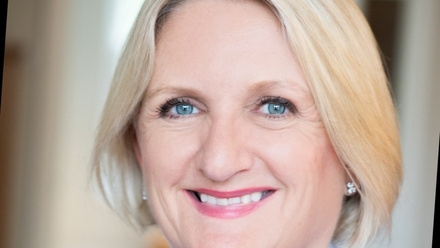Worrying inequality in savings. Here's the crucial action needed to bridge the gender pension gap

The Department for Work and Pensions suggest individuals will need between half to two thirds of their final salary in retirement to maintain the same standard of living. With the State Pension currently offering a maximum of approx. £8,700 annually, shortfalls need to be made up by the individual. This is more challenging for women, because of the significant social obstacles they’re likely to face throughout their lifetime, such as lower pay or time off work for parental or caring duties.
What’s the gender pension gap?
Since last year, larger companies have to report on and publish details of gender pay gaps that exist in their organisations, so we’re now very familiar with the term gender pay gap and the inequalities it represents. But, much less is known about the gender pension gap and research shows that it’s much more worrying than the pay gap. The European Commission found that in 2016, the average pay gap across Europe was 16 per cent while the average pension gap was 40 per cent. The UK pension gap is estimated at 30 per cent, according to Mercer.
Earnings form the basis of our pension, and the disparity between gender and pay has a direct impact on a pension value and standard of living in retirement. Despite auto-enrolment, women’s pension pots are still worth less than their male equivalents at retirement age. A study by Fidelity of over 2,000 men and women found that a male currently aged 25 – 34 can expect an average pot of £142,836 at their State Pension age of 68, a female the same age can expect just £126,784. Taking this example further, if both took their tax free cash entitlement of 25 per cent at retirement and bought an annuity – a guaranteed income for the rest of their life - with the rest, the male would receive £6,380 a year. The female would receive £5,623 – a difference of over £750 a year.
As well as women tending to earn less over their working lives, another factor is ‘the motherhood penalty’. This covers the reduction in earnings that comes from taking maternity leave and potentially returning part time and on a reduced wage. Similarly, women are more likely to be caregivers at a later stage in life, resulting in more time off work, less income and reduced employer contributions into their pension.
What about the state pension?
“It really is unfair that women are second-class citizens when it comes to pensions” Baroness Ros Altmann, former pensions minister.
Historically, the State Pension has been skewed in favour of higher earners, who tend to be men. In 2018, of those eligible for the State Pension, the average male received £153.86 a week compared with £125.98 a week for the average female. Over a retirement period of 20 years this equates to a difference of £28,995. The new single tier State Pension aims to remove this bias but it won’t fully equalise the position for retirees for many years. Going forward, eligibility for the State Pension will be based on an individual’s national insurance record. 35 years’ worth of national insurance contributions achieves the full entitlement, with a minimum of 10 years of contributions required to receive any form of State Pension.
Can we close the gap?
There are positives for women. Thanks to last year’s legislation on the gender pay gap, that requires all employers with over 250 staff to report and publicise their gender pay gap. But, it will take some time for these changes to fully kick in. So what can be done in the meantime?
Evidence shows that financial education can boost the value of a pension; by improving contributions and investment return. As an employer, we feel the best thing to do is to tackle the issue head on by launching a financial wellbeing programme centred on;
Improving contributions: Tax relief’s available for most, on up to £40,000 (gross) of contributions into their pension pot. Even if they can only afford to increase their contribution by just 1 per cent, it’ll cost them less than they think.
Investment return: Studies show women tend to be more cautious with investment. Lack of knowledge and confidence is often cited as the reason for women being hesitant to make investment decisions; 40 per cent of our female clients fell into a low confidence bracket, compared to just 20 per cent of men.
Our research has found that perhaps women set the bar too high when it comes to investing – and that many equate being a good, knowledgeable investor with turning investing into a time-consuming hobby. As an industry, we need to debunk the myth that you need to be a stock market expert to make a good investment, in fact you can select expert fund managers to make the decisions on your behalf. With just a small amount of investment in financial education and a boost in confidence, there is no reason why women can’t achieve the same in retirement as their male counterparts and have a fulfilling and satisfying life after work.
The author is Clare Stinton, Workplace Savings Specialist at Hargreaves Lansdown.
This article is provided by Hargreaves Lansdown.
In partnership with Hargreaves Lansdown
Welcome to HL Workplace - savings & investments your employees can understand, engage with, and value.







